North American P-51D MustangThe British inspired, American built Mustang was one of the most potent and versatile fighters of WWII, operated as a long range escort and in the close air support role. It became the first fighter capable of accompanying American bombers all the way to Berlin and back. When first flown in 1940 it was powered with an Allison engine. But later models were powered by a Packard Merlin which provided it with considerable extra power at higher altitudes. This aircraft is the 'Dove of Peace.' |
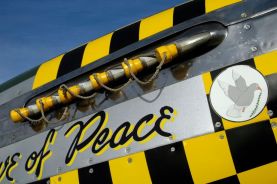
|
North American Harvard-Roaring Forties Team
|
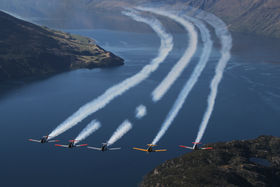
|
Beech-18
The N43927 was purchased in the USA and prepared for the trans Pacific flight at Stockton CA by Taigh Ramey. 50 hours flying Stockton - Hilo - Christmas Island - Pago Pago - Vanuatu - Norfolk Island - Auckland |
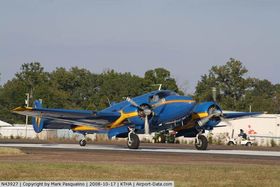
|
YAK-3This aircraft was one of ten new-build Yaks completed by the Yakovlev Design Bureau in the early 1990s. The build initiative was brought about by the discovery of the original jigs at the YAK Design Bureau and the fact that none of the nearly 5,000 YAK-3s built during the the Great Patriotic War had survived in an air worthy state. Wooden wings were replaced with a new design metal wing and an American Allison V-12 engine replaced the almost extinct original Klimov V-12. |
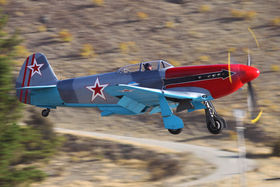
|
de Havilland DHC-1 Chipmunk
|

|
STOL AircraftFrom Hornet Microlights to Gyroplane-Autogyro MT Eagles to team Rockets F1 EVO these Sport Aircraft are often the entry point for pilots who may go on to Warbirds flying. With extraordinary manoueverability and short take off and landing (STOL) capabilities these aircraft can go anywhere and some can land on a dime. |
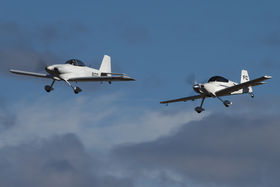
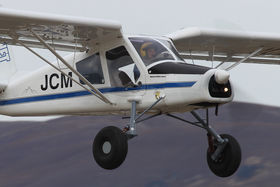
|
T-6C Texan IIThe Hawker Beechcraft Defense Company, LLC T-6C Texan II is a single-engine, turboprop aircraft built in the USA as a reliable, low maintenance military trainer for Air Forces. With a top speed of 316 knots, limits of +7g to -3.5, it is equally adept at teaching the most advanced aerobatic maneouvers and simulated combat training tasks that could previously only be accomplished in far more expensive aircraft. The T-6C military trainer is used to train pilots, navigators and weapon system officers from more than twenty different countries from around the world including the U.S Air Force, U.S Navy, NATO flying Training Canada and the RNZAF. |
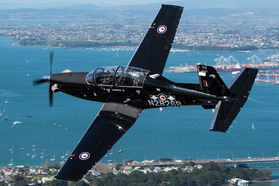
|
Avro Anson 652A MK.1 Series IIThe Avro Anson was a coastal reconnaisance bomber that entered service in 1936 performing anti-submarine and convoy protection duties. It was the first monoplane combat aircraft and the first to have a retracting undercarriage.
|
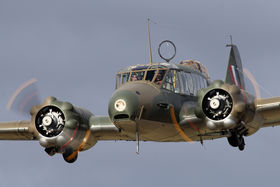
|
StrikemasterProduced by The British Aircraft Company Ltd in England, the Strikemaster was exported to Saudi Arabia, South Yemen, Kuwait, Oman, Singapore, Kenya, Ecuador and New Zealand. |
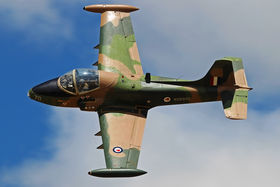
|
Grumman AvengerThis historically significant torpedo bomber aircraft, the high powered WWII - era Grumman Avenger was the largest single engine aircraft of its time. This Grumman Avenger was an important RNZAF type from the Pacific campaign, built in 1945 and allocated to the US Navy at San Diego. It was later used for crop spraying before it was retired and eventually restored by the Old Flying Machine Company in the UK. These high powered, rugged machines were designed as carrier-born torpedo bombers and have folding wings. |
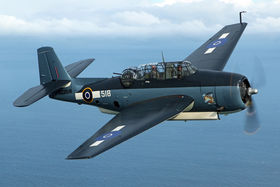
|
NH-90 HelicopterThe NH-90 is an advanced medium utility helicopter providing the Royal New Zealand Air Force with a highly capable and deployable helicopter that can be used for frontline military and civil operations. The NH-90 can carry up to 12 fully equiped soldiers and up to 9 stretchers plus medical staff or palletised cargo. It can also lift the army's light operational vehicle. |
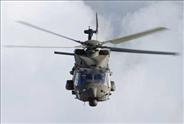
|
CASA CN-235-300Armee de L'Aire (French Air Force from Noumea) are bringing their medium range twin turbo prop CASA once again to Wanaka. This time it will be flying. Developed as a regional airliner and military transporter, its roles are maritime patrol, surveillance and troop transport |
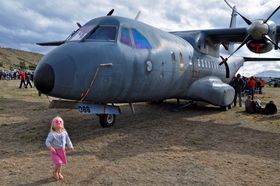
|
Hawks 127 Fighter-trainer jet Royal Australian Air Force (RAAF)The Australian Hawk 127 is mainly used as a lead in fighter-trainer, preparing crews to fly F/A-18 Hornets. The powerful two seater jets are 12m long and can reach speeds of over 1200km/h. They are powered by a single Rolls Royce turbofan engine and can carry Mk82 bombs, sidewinder missiles and a 30mm cannon. Weighing nearly 5,500kg it has a range of over 1200km and flight ceiling of 50,000 feet. |
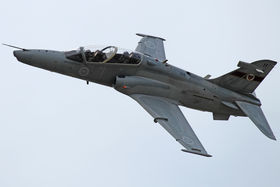
|
Douglas C-47 Dakota (DC-3)The DC-3 served in World War II , Korea and Vietnam and was a favourite among pilots. For more than 70 years, the aircraft known by a variety of nicknames - the Doug, the Dizzy, Old Methuselah, the Gooney Bird (US Air Force), the Grand Old Lady - but which to most of us simply the Dakota has been the workhorse of the skies.
With its distinctive nose-up profile when on the ground and extraordinary capabilities in the air, it transformed passenger travel and served in just about every military conflict from World War II onwards.
|
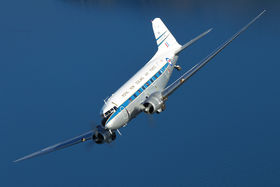
|
C-17 Globemaster IIIThe C-17 Globemaster III is the newest, most flexible cargo aircraft to enter the airlift force. The C-17 is capable of rapid strategic delivery of troops and all types of cargo to main operating bases or directly to forward bases in the deployment area. The aircraft can perform tactical airlift and airdrop missions and can transport patients during aeromedical evacuations when required. The C-17’s has three crew, two pilots and one loadmaster and can carry 102 troops/paratroops; 36 litter and 54 ambulatory patients and attendants; 77,519 kilograms of cargo (18 pallet positions). Wingspan 52 m |

|
Supermarine Mk IX SpitfireThe Spitfire, one of the most famous aircraft of WWII, was designed in 1934/35. By the 3rd September 1939 when England declared war on Germany, 400 Spitfires were in service. Production of the many and varied marks of Spitfires lasted through and beyond the war years, with the final Spitfire coming off the production line in February 1948. An estimated 22,579 Spitfires served in all spheres of the War and afterwards. |
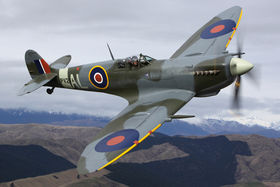
|
Air Bandits
|
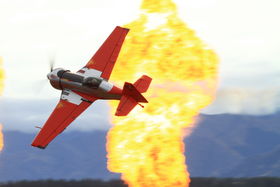
|
Air Bandits
|
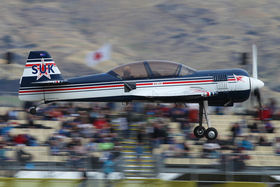
|
Messerschmitt Bf109The Messerschmitt Bf109 was the main fighter aircraft of the German Air Force during WWII. A deadly and feared fighter, some consider it was the best aircraft of its generation and the most produced fighter aircraft in history. Designed by Willy Messerschmitt and Robert Lusser in 1935 and blooded in the Spanish Civil War, where it showed it had the potential to out manoeuvre and out fight any aircraft at that time……..until it met its match during the Battle of Britain, up against the RAF’s Spitfire and Hurricane – the rest as they say is history. The Buchon is essentially a Rolls-Royce Merlin engine Messerschmitt Bf109. The Luftwaffe left around 40 for the Spanish Air Force to use upon its return to Germany in 1939. In 1943 the Spanish government agreed with Messerschmitt to produce 200 Bf109G’s. Improving relations between the Spanish government and the West from 1952 onwards, saw a more powerful engine sourced from Britain, the two-speed Rolls Royce Merlin 500-45. The inclusion of the Merlin engine required modifications to be made to the Bf109’s airframe, which gives its nose a distinctive appearance. The combination of ex-German airframe and British powerplant was successful, and the first prototype flew its maiden flight in 1954. This particular aircraft (Variant HA-1112 MIL Buchon) was given the construction number 223 when built by Hispano Aviacion in Seville in 1959. This aircraft was one of 27 purchased from the Spanish Air Force by Spitfire Productions for use in the 1968 film “Battle of Britain”. By now registered as G-AWHK, this Buchon was then shipped to Texas where it flew briefly before being placed on static display in 1971 with the Confederate Air Force in Detroit. Acquired by the Old Flying Machine Company, it arrived at Duxford in 1996, re-registered as G-BWUE. The aircraft was marked up as Hauptmann Werner Schroer’s Bf109G-2/trop “Red 1” which he flew whilst serving on the Greek island of Rhodes in 1943. In 2006, G-BWUE moved back to Duxford to be maintained by the Aircraft Restoration Company. Appearing regularly at airshows in the UK, it also appeared in “Hindenburg”, and “Valkyrie” starring Tom Cruise. Now owned by Historic Flying Ltd., G-BWUE has been painted as Messerschmitt “Yellow 10” as it appeared in the classic war film, “Battle of Britain”. |

|
Martin JetpackThe Martin Jetpack is a disruptive technology, much like the helicopter was when first developed, with substantial capabilities and is able to be flown by a pilot or via remote control. The Jetpack can take off and land vertically (VTOL) and because of its small dimensions, it can operate in confined spaces such as close to or between buildings, near trees or in confined areas that other VTOL aircraft such as helicopters cannot access. Martin Jetpack has been designed with safety in mind and for easy adoption, with pilot qualifications easy to obtain. The Jetpack is “fly by wire” so unlike other aircraft including helicopters it is relatively easy to operate and with its ballistic parachute system that can safely recover the aircraft from a few meters above the ground it will be one of the most safe light aircraft on the market. Martin Jetpack’s capability gives it a competitive advantage in key markets: first responder, military, commercial and recreation. As a heavy lift Vertical Take-off and Landing (VTOL) unmanned air vehicle (UAV), the Martin Jetpack has a significant operational advantage being able to carry commercial payloads of up to 120kgs unlike Quadcopters which are limited to only a few kilograms. |
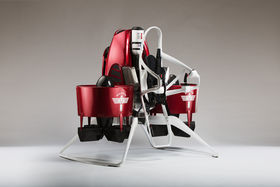
|
YAK 52 Formation Aerobatic TeamHighly-skilled pilots will perform precision aerobatics in the New Zealand YAK Formation Aerobatic Team display. The Yak52 is a tandem two-seater Russian air trainer with a 360 HP Vedeneyev M14P radial engine. It has a top speed of 220 knots (420 km/hr) and can withstand extreme G Forces, from -5 to +7. Rumour has it that the fuel tank was small to prevent Russian pilots from defecting to the West. The aircraft can land with the landing gear in the up position. Although this isn't too healthy for the propeller, taking about 15-16 centimetres off it, the YAK 52 can still fly in this condition. The engine start, flaps, brakes and landing gear are all pneumaticly or air operated, helping the Yak52 operate in the cold Russian climate. To start, it is a blast of air that pushes the piston down to get the engine rotating. |
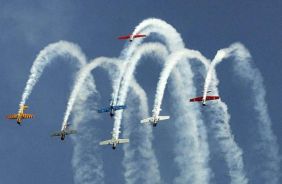
|
P51-D MustangThe North American Aviation P-51D Mustang was a long-range, single-seat fighter and fighter-bomber used during World War II, the Korean War and several other conflicts. During World War II, Mustang pilots claimed 4,950 enemy aircraft shot down. Built by North American Aviation (NAA) the prototype airframe was rolled out in September 1940. First flown by the RAF as a tactical-reconnaissance aircraft and fighter-bomber, the P-51D was powered by the Packard V-1650-7, a two-stage two-speed supercharged engine and armed with six .50 calibre (12.7 mm) M2 Browning machine guns. From late 1943, the RAF and the USAF used the Mustangs as fighter-bombers, helping to ensure Allied air superiority in 1944. The P-51 was also in service with Allied air forces in the North African, Mediterranean and Italian theatres and saw limited service against the Japanese in the Pacific War. At the start of Korean War, the Mustang was the main fighter of the United Nations until jet fighters took over this role; the Mustang then became a specialised fighter-bomber. The Mustang remained in service with some air forces until the early 1980s but after World War II and the Korean War, many were converted for civilian use, especially air racing. |
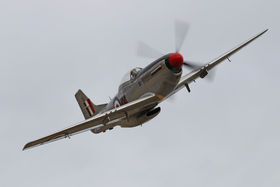
|
Curtiss P40 KittyhawksAt next year’s Airshow two Curtiss P-40 Kittyhawks will take part in an historic re-enactment of attacks on shipping and airfields in the Soloman Islands. The Auckland based P-40N Kittyhawk Currawong is the single engine, single seat, all metal fighter and ground attack aircraft first flew in 1938. It was used by the Air Forces of twenty eight nations, including the Royal New Zealand Air Force. A total of 13,738 P-40 aircraft were built during the Second World War. Today only a handful remain flying around the world, this aircraft belonged to the Royal Australian Air Force. It was recovered from the Northern Coast of New Guinea where it had been abandoned at the end of the Second World War. Its restoration started in 1997. Work was completed three years later and the P-40 made its first public debut flight in 2000. The second Curtiss P-40E Kittyhawk came down under for the RNZAF in 1942. Withdrawn from use in 1945 it was rebuilt for flight in 1997 at East Tamaki. Shipped to England in 1999 it returned to New Zealand in 2003 and was converted to a two-seater aircraft. Three hundred P-40s were allocated to the RNZAF under Lend Lease, for use in the Pacific Theatre, although four of these were lost in transit. The aircraft soon proved to be successful in air combat against the Japanese between 1942 and 1944. The P-40 pilots claimed 99 aerial victories, whilst losing twenty in combat. The overwhelming majority of RNZAF victories were scored against Japanese A6M Zeros and Aicha D3A ‘Val’ dive bombers. Geoff Fisken was the highest scoring British Commonwealth ace in the Pacific. The New Zealand pilot shot down fourteen aircraft, eight of them while flying a P-40 Kittyhawk. From late 1943 and 1944 the RNZAF P-40s were increasingly used against ground targets, including the innovative use of naval depth charges as improvised high capacity bombers. In late 1944 the P-40s returned to New Zealand as advanced fighter trainers and were replaced by F4U Corsairs. |
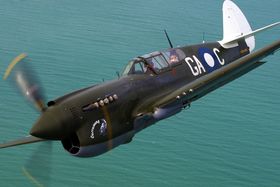
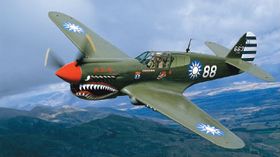
|
Goodyear FG-1D Corsair
First flown in 1939 it was the first American aircraft to exceed 400mph in level flight. Operated by the US Marines and US Navy the type was also operated by a number of other countries including Great Britain and New Zealand. The Corsair helped gain air superiority by the Allies in the Pacific. Powered by a 2000hp Pratt & Whitney radial engine it is the last airworthy example of over 400 operated by the RNZAF. |
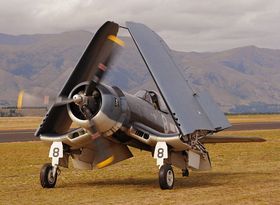
|
Consolidated PBY CatalinaFirst flown in 1936, the Catalina was designed as a long range maritime patrol and attack aircraft. The RNZAF operated 56 examples in the Pacific during and after WWII. Stabilising floats, which, when retracted in flight formed streamlined wing-tips, were unique innovations which made this aircraft ideal for use in the surveillance, anti-submarine, air/sea rescue and convoy patrol roles. This aircraft, ZK-PBY, was purchased by the Catalina Group and arrived in New Zealand in 1994. |
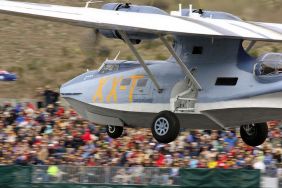
|
Beechcraft Staggerwing Model 17One of the most distinctive and iconic aircraft of the 1930’s was the Beechcraft Model 17. Known as the “Staggerwing” because of its negatively staggered upper mainplane, the aircraft was also one of the first private aircraft to incorporate retractable landing gear, a feature that helped it achieve a cruise speed of over 200 m.p.h. Both New Zealand and Australia received their first Staggerwing’s from the Beechcraft factory in 1936. The Auckland Aero Club purchased a C17L model for use as a high speed air ambulance and executive transport. Australia’s first Staggerwing was a C17B model, that was purchased by the Century Battery Company and registered as VH-UXP. This Staggerwing had a colourful history that included service with both the RAAF and General Douglas MacArthur’s, American division based within Australia during World War II. Post war, VH-UXP enjoyed many years of private use until being brought to New Zealand for a “ground-up” restoration. This was completed in 2013, with the Staggerwing being returned to the identical condition in which it left the Beechcraft factory in 1936. With its original registration, colour scheme, cockpit instrumentation and interior appointments this Staggerwing is a 1930’s flying time capsule! |
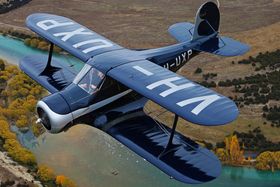
|